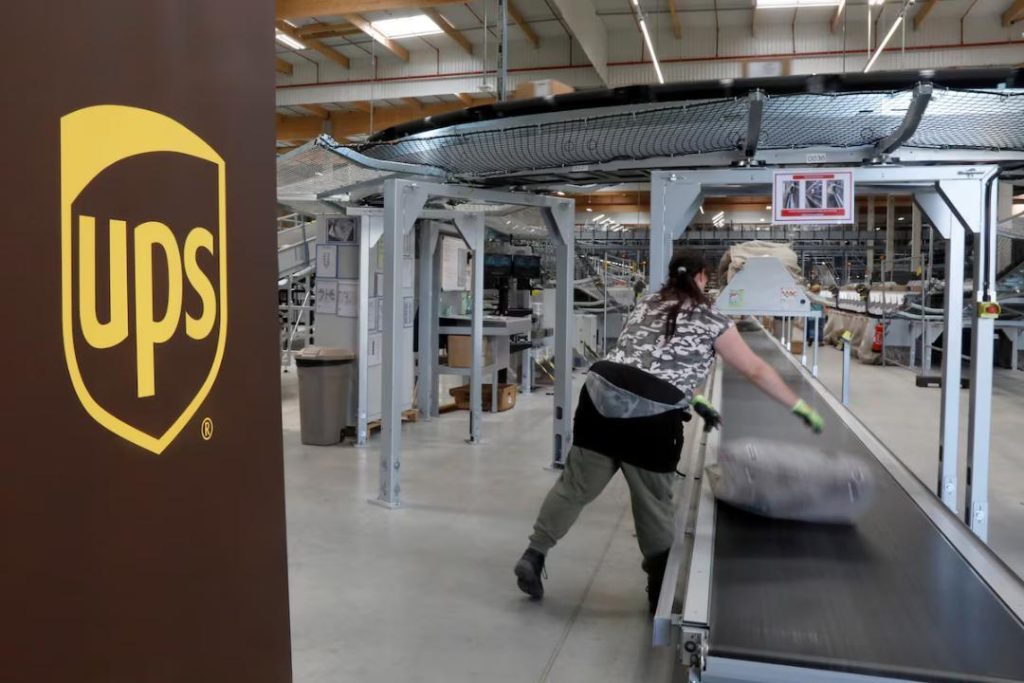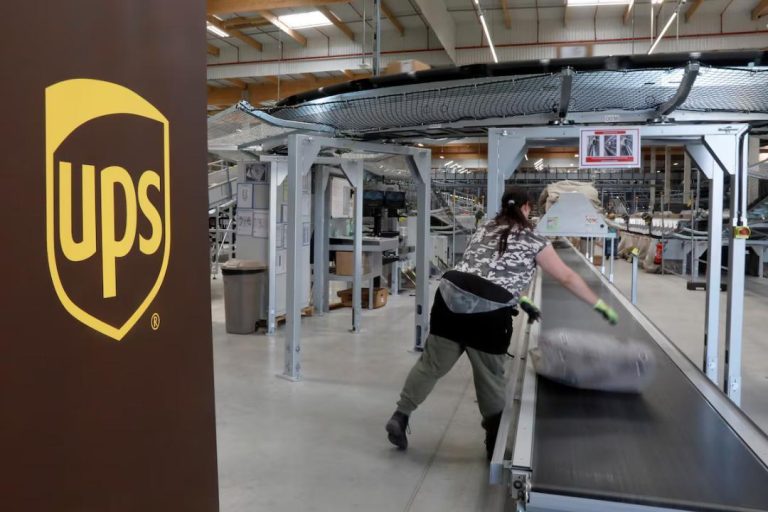
UPS to Cut 20,000 Jobs to Lower Costs & Prepare for Potential Pullback from Amazon
In a move to reduce costs and prepare for potential changes in its largest customer’s delivery needs, United Parcel Service (UPS), the world’s largest package delivery firm, has announced plans to cut 20,000 jobs. Additionally, the company will be shutting down 73 facilities across its network. This significant restructuring effort is aimed at streamlining operations and ensuring the company’s long-term sustainability.
The news comes as a response to the evolving logistics landscape and the increasing competition in the package delivery market. With e-commerce sales continuing to rise, companies like UPS, FedEx, and others are under pressure to adapt to changing consumer behaviors and technological advancements.
In a statement, UPS CEO Carol Tome emphasized the importance of this restructuring effort, saying, “The actions we are taking to reconfigure our network and reduce cost across our business could not be timelier.” Tome went on to explain that the company is proactively addressing the challenges posed by the COVID-19 pandemic, which has accelerated the shift to online shopping and created unprecedented demand for package delivery services.
The job cuts, which represent approximately 4% of UPS’s total workforce, will be implemented across various functions, including management, administrative, and operational roles. The company has announced that it will provide support to affected employees, including severance packages, outplacement services, and career transition assistance.
The shutdown of 73 facilities, which includes package delivery centers, sorting hubs, and other operational sites, is designed to eliminate redundant capacity and optimize the company’s logistics network. This move is expected to reduce costs by streamlining operations, improving efficiency, and enhancing the overall customer experience.
So, what’s driving UPS’s decision to cut jobs and close facilities? The answer lies in the company’s reliance on Amazon, its largest customer, which accounts for a significant portion of its revenue. With Amazon’s rapid growth and increasing competition in the e-commerce space, UPS is preparing for a potential pullback from its largest customer.
Amazon, which has been expanding its logistics capabilities through investments in its own delivery network, has been a major driver of growth for UPS in recent years. However, as Amazon’s delivery capacity increases, it’s likely that the company will reduce its reliance on third-party logistics providers like UPS. By cutting jobs and closing facilities, UPS is positioning itself to adapt to this potential shift and maintain its competitiveness in the market.
The impact of UPS’s restructuring efforts on the logistics industry and the broader economy is still uncertain. However, it’s clear that the company is taking proactive steps to ensure its long-term sustainability and competitiveness.
In conclusion, UPS’s decision to cut 20,000 jobs and shut down 73 facilities is a significant move that reflects the company’s commitment to adapting to changing market conditions and customer needs. As the logistics industry continues to evolve, it’s essential for companies like UPS to remain agile, innovative, and customer-focused to stay ahead of the curve.






